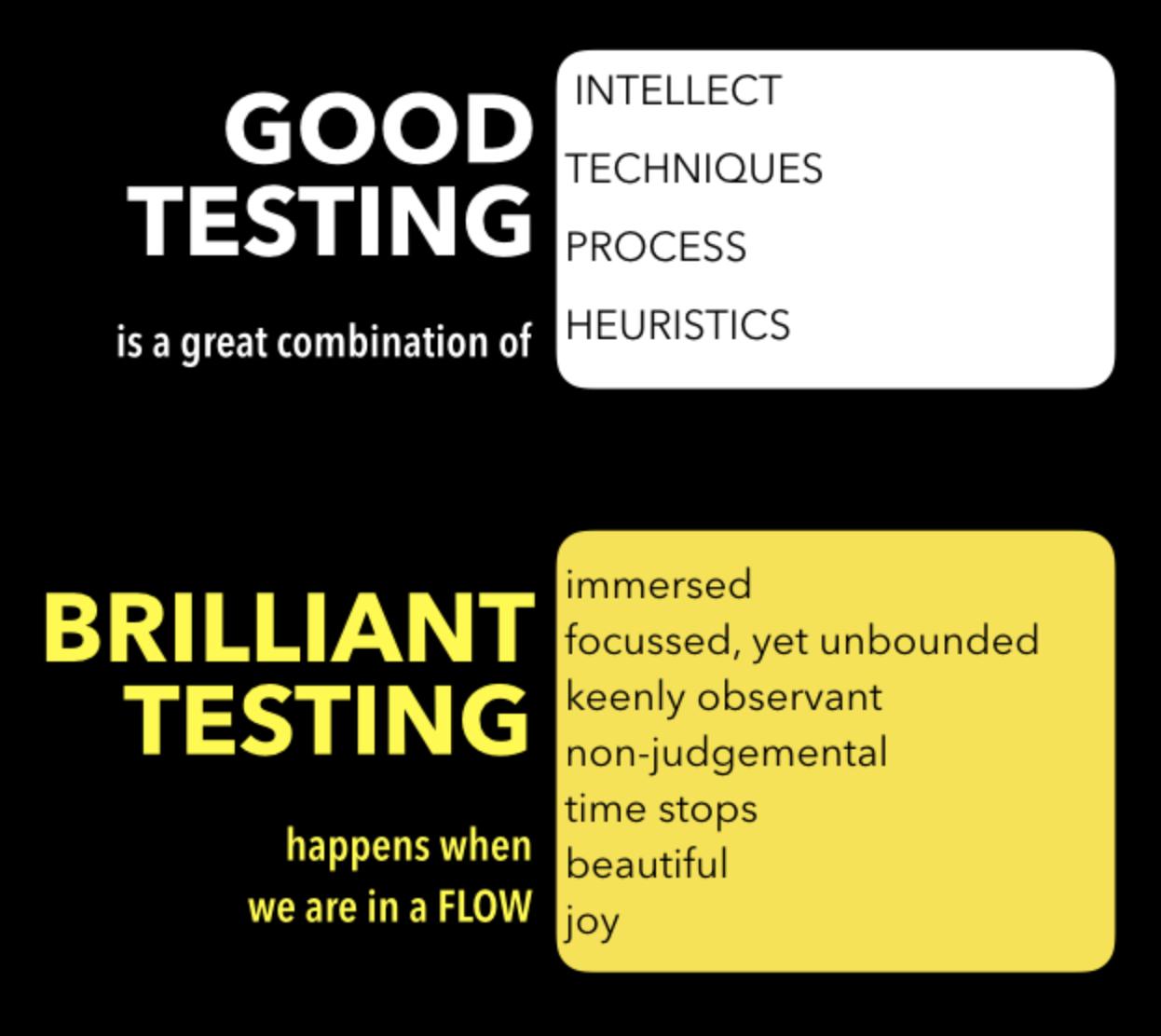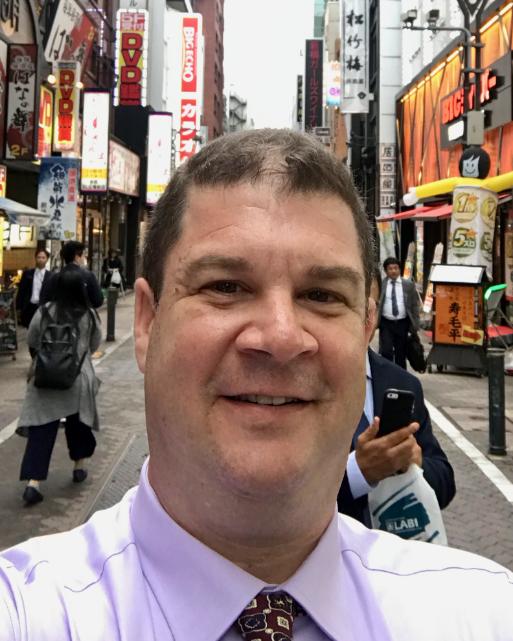
11 minute read
T’ TALKS
T Ashok is the Founder & CEO of STAG Software Private Limited. Passionate about excellence, his mission is to invent technologies todeliver “clean software”.

Advertisement
He can be reached at ash@stagsoftware.com


Be in a Flow. Test Brilliantly.
Summary
Good testing is a great combination of intellect, techniques, process and heuristics. What does it take to do brilliant testing ? It requires one to be immersed in the act, be focussed yet unbounded, be keenly observant but non-judgemental, with outcome that are beautiful, the activity so joyful that time stops. A state of flow. What does it take to get there?
Introduction
As engineers we use good techniques, tools, process and intellect to do things well. So how can we do far better, that is brilliantly? Having possibly exhausted all things “external”, in terms of tools, techniques, process and intellect, it is time we considered the huge “internal” potential that we all possess. It is about going beyond the intellectual mind, deeper into the sub-conscious to harness the infinite potential. A good start for this would be get into a state of ‘flow’.

So, what is FLOW?
Flow is the state when you are immersed in what you are doing, where you are totally mindful. It is when all energies are harnessed fluidly to do brilliant work without tiring or trying hard, becoming an observer, fine tuning actions with extreme agility, when time seems frozen. It is when you accomplish a lot, doing work effortlessly and experiencing absolute joy.
So how can we get into the state of flow?
When multiple sensory excitations converge harmoniously, there is a good chance of entering that state of flow. What does that mean? It is engaging the various senses well – colours, picture, visual test, mind maps for the eyes, using pen/pencil, paper for the touch, and maybe background music or talking to oneself for ‘engaged hearing’. Note the keyword is ‘harmonious’.

When we stimulate our creative side with interesting visuals, tactile and possibly sound, it activates us to get into an ‘engaged state, a state of mindfulness. Exploit visual thinking by using visual text , sketch maps, mind maps to : (1) enable deeper understand the system under test (2) to sketch test strategy (3) jot down test ideas (4) note down observations, questions, suggestions (5) list scenarios (6) record issues. Exploit the tactile sense by using pen/pencil on paper or finger/stylus on tablet instead of keyboard. The objective is to be write/draw freely rather than be constrained by the keyboard. If you want to engage your auditory sense, quietly talking to yourself, melodious quiet whistling or if you are music person, then a suitable background song played could enable you to get into the flow. To ensure that we can perform in the state of peak performance being in a FLOW, it is imperative that we do testing in short sessions. A session may be anywhere between 45-90 minutes. The key is to stay focussed, setup an objective at the start of session and then engage as stated earlier to get into a state of FLOW.
How does this help?
When we are fully engaged, in a state of FLOW, it is no more about just left brain centred logical/ deductive thinking, or the creative right. It is an expansive multi dimensional thinking brought about by the harmonious stimuli enabling one to become a keen observer and absorb deeply and rapidly. This is when we exploit the infinite power of what we possess, delving into the sub-conscious which is much larger that conscious mind. Interesting questions pop up, ideas germinate rapidly, actions are done quickly, smallest observations captured resulting in brilliant effective testing.
In closing…
Test automation allows us to do more, and machine intelligence to do better. It is now necessary for us to delve deeper so that we complement the machine rather than compete, enabling us to be super efficient and effective by being smarter. Get into the state of flow to harness the power of sub-conscious to do brilliant testing.
Mindful Testing – because testing should not be done on autopilot

I was asked to do a talk on Mindful testing for Swiss Testing Day. I liked the idea. I have been practicing Mindful Testing personally (and mostly quietly) for the last couple of years, and this gave me an excuse to look back at the ways I have been improving it with my experience. For reference, the first time I wrote about this topic was a couple of years ago, you can read the original here the original Mindful Testingpost.
Mindfulness is obviously not related to testing
I have been practicing mindfulness for 3 or 4 years now. It started after I read about the practice and the apps circling around the Internet. I kept with it because it helps me to focus whenever my ADD tries to take over.
Today I do mindfulness exercises almost every day, and sometimes two or three of times a day. I have a couple of apps to help me with it, if you want recommendations leave me a comment and I will send you the names and why I like them. In extremely simple terms, mindfulness is the practice of Focusing one’s complete awareness on the present moment. If it sounds simple and if you think you do that all the time, then you have not thought about it all the way through. Focusing one’s complete awareness means clearing your head from everything and anything else.
• It means that you are only and completely interested in what you are doing now. Learning and capturing every detail. Imagine the feeling of sitting at the edge of your sit in anticipation, just like you did when watching the last Avengers film in the theater.
• It is being so immerse that time passes without you noticing, because time is less important when you are 100% interested in what you are doing right now.
It is not easy to be 100% mindful, but you also do not need to 100% mindful to gain all the benefits. Sometimes it is enough to be aware of the fact that our mind wanders around, in order to start getting value out of this practice.
Mindful Testing
As I wrote earlier, I have been exploring the practice of Mindful Testing for a couple of years, expanding on the practical aspects of it.
Today, I believe that the main ideas about this practice can be synthesised in the following 7 points:
1. Focus totally on your current testing objectives
2. Test only what needs to be tested now
3. Test as early as possible
4. Provide the important feedback first
5. Maintain live communications
6. Plan to have feedback sessions
7. Reduce interruptions
Let’s review them quickly.
Many times we start testing based on a vague sense of the feature that stands in front of us.
This is especially true if you are an experienced tester, working on the same project for some months or even years. It happens as we gain a fail sense of self-trust and when we start falling into a repetitive routine causing us to loose focus.
NO – Stop!
You need to understand not only what the feature is, but also what value it is supposed to bring to the user.
If the answer is “I am going to test the complete feature” then make sure you break this down into smaller objectives you can focus on, and more importantly that you can verify you covered them.
Two – Test only what needs to be tested now
Do not try to test too much in one session. Get a clear understanding of what you want to test during the present session, and focus on this point only.
Sure, as you are testing the specific feature you will get ideas of other stuff that needs testing. Don’t fall into the trap of making a quick detour to explore this new path, write it down on your notebook and make it another objective for a separate session.
Three – Test as early as possible
start testing as early as possibleThe objective of testing is to provide feedback on the feature (and if possible on the process). Good feedback will help improve the feature, but you also need to make sure to provide this feedback when there is still time to make the improvement.
Many times you will find important things, only to be told that there is no time to do anything about it. This is why you should test functionality as early as you can.
Linking this with the previous point… If you break your testing into small chunks, then you will do good by scheduling these sessions as early as possible.
Four – Provide the important feedback first
Plan your tests within the session in a way that will seek the important feedback first, and then move to the other areas of interest.
If the main question of the team is around response time, then start there! If they are looking for a general validation, do a quick overview before you move into any specific areas. You get the point…
The important thing is to start from the most important areas, so that you can provide this information early in the process, and as part of the process.
Five – Maintain live communications
The previous point was about providing the important feedback first. This one is about providing it as you find it, instead of waiting to communicate any important news until the end of your session.
Small things can wait, but big things need to be know ASAP. It is OK if this will interrupt your session.
This is especially true in Agile and DevOpsorganizations, where release cycles can be measured in days (and sometimes in hours).
feedback sessionMany times you will not have a big ticket item to communicate. No smoking guns, or “Stop the Presses” bugs, but you will have good feedback that can’t always be translated into concrete bugs or test results.
Make sure you have feedback sessions with your development team planned regularly, to be able to explain what you are doing and finding, and get their inputs on these points.
I even recommend setting up debriefing sessions once you are done testing the User Story, to make sure you covered all the areas and that there are no unusual findings that may raise a flag to someone else in your team.
Seven – Reduce interruptions
This may be also the first point in the list, but for some reason it made more sense to me to place it at the end.
Make sure you can test without being interrupted unnecessarily. These interruptions may come from your team, but nowadays it may come from a whole set of different places (with our current Working from Home lives).
It is very hard to reach a state of concentration that can help you carry a Mindful Testing Session. Once you reach it, you will want to maintain it for at least 45 to 90 min straight.
Be Present & Work on the Highest Value Testing Task
I think this sums up the whole principle in 2 main ideas:
• Be Present means to be mindful. To put all your attention on what you are trying to achieve now, and not focus on 3 or 7 things at the same time.
• Highest Value Testing Task is the place where your work can add the most to the objective of your team. Helping everyone to release the product as quickly as we can, and with the target level of Quality and User Satisfaction.
All the rest is the icing on the cake.
Joel Montvelisky is a Co-Founder and Chief Solution Architect at PractiTest.
He has been in testing and QA since 1997, working as a tester, QA Manager and Director, and a Consultant for companies in Israel, the US and the EU. Joel is also a blogger with the QA Intelligence Blog, and is constantly imparting webinars on a number of testing and Quality Related topics. Joel is also the founder and Chair of the OnlineTestConf (https://www.onlinetestconf.com/), and he is also the cofounder of the State of Testing survey and report (https://qablog.practitest.com/state-of-testing/). His latest project is the Testing 1on1 podcast with Rob Lambert, released earlier this year - https:// qablog.practitest.com/podcast/

Joel is also a conference speaker, presenting in various conferences and forums world wide, among them the Star Conferences, STPCon, JaSST, TestLeadership Conf, CAST, QA&Test, and more.
Association for Software Testing (AST) comments on Online Exams


- AST news
ASTwasrecently askedfor an opinion about online examinations for certification bodies, specifically online Bar Exams.
AST’s conclusion is that to properly serve their technical and social purposes, online examinations must be administered in a fair and unbiased manner. They should not be difficult to undergo for people of modest means, and their administration should not create additional stress on already stressed examinees due to implementation or technology. Any gatekeeping these exams represent must be based strictly on merit.
No candidate should fail an exam other than on merit. Failure grades because of equipment barriers, power outages, the widely known unreliability of the Internet, or inherent racial and class biases in algorithms and examination methodologies are unfair to both the candidates and society as a whole.
If an examination as currently planned can’t meet these requirements for all examinees, then it should not proceed. Even during COVID-19, there are methods to administer in-person exams. Decisions about how to administer exams should be made to best accommodate examiners AND examinees.
Read theFull Press Release here



